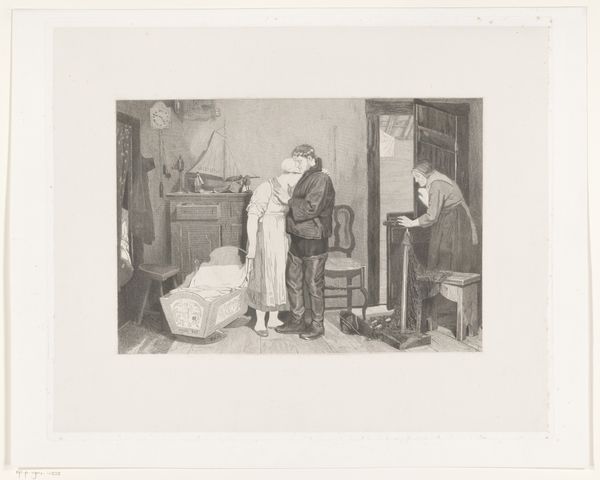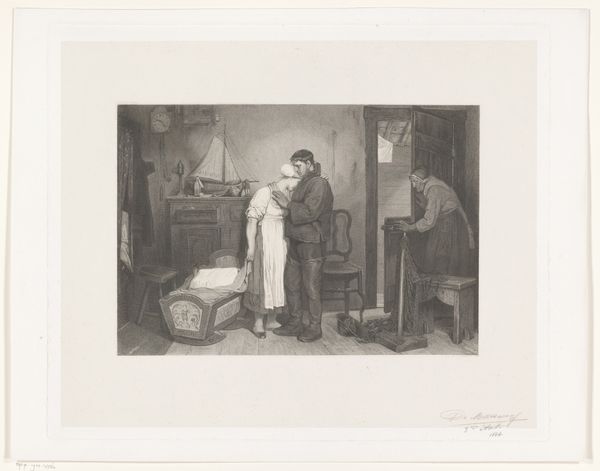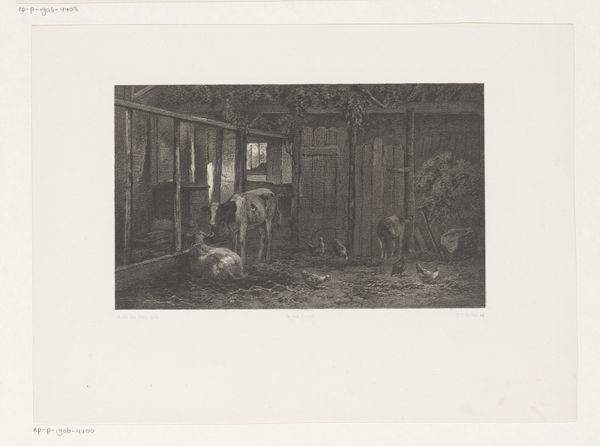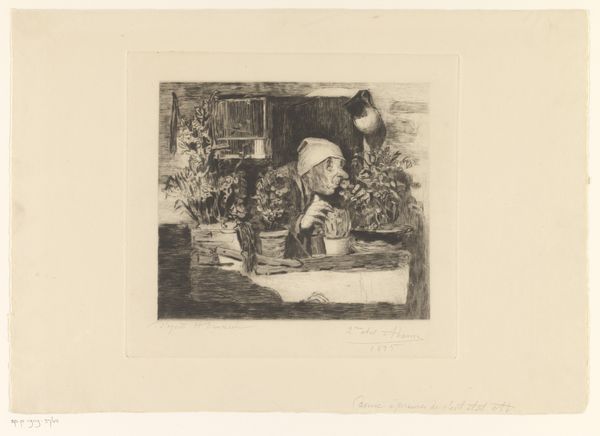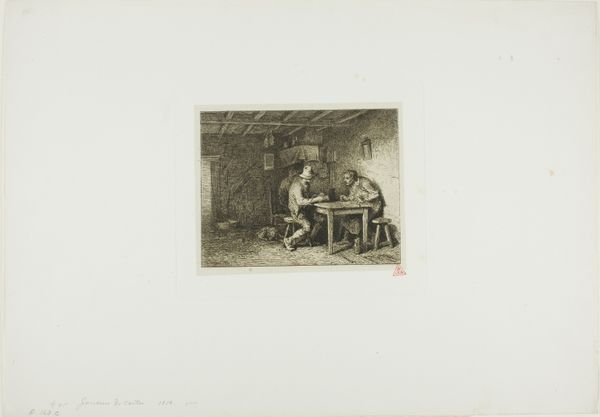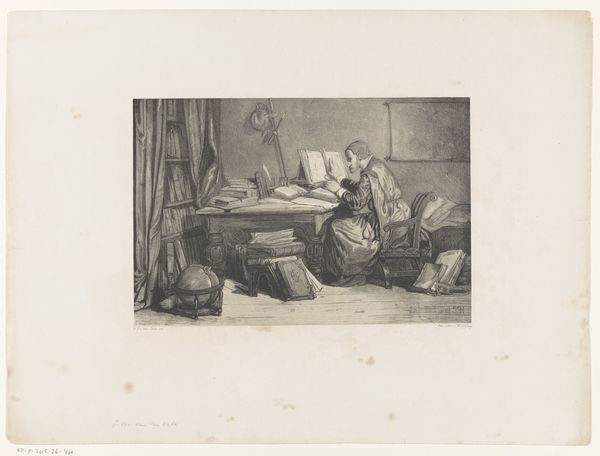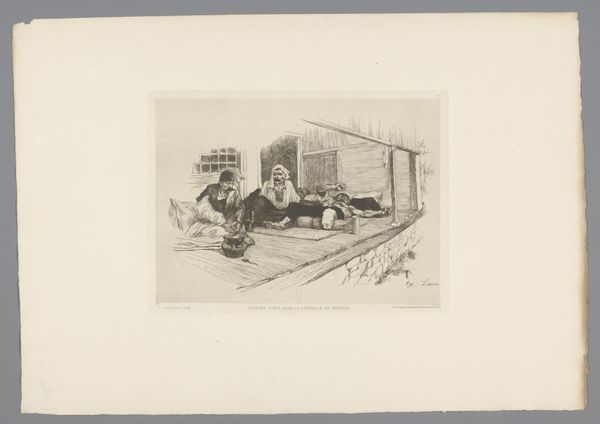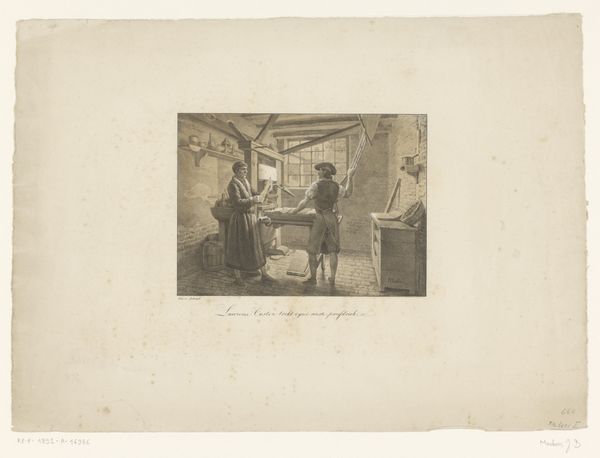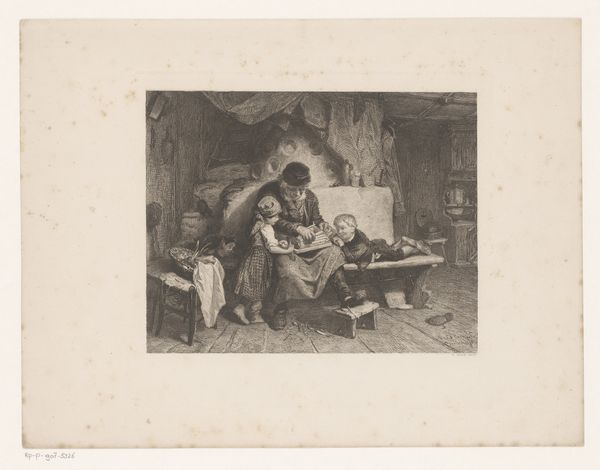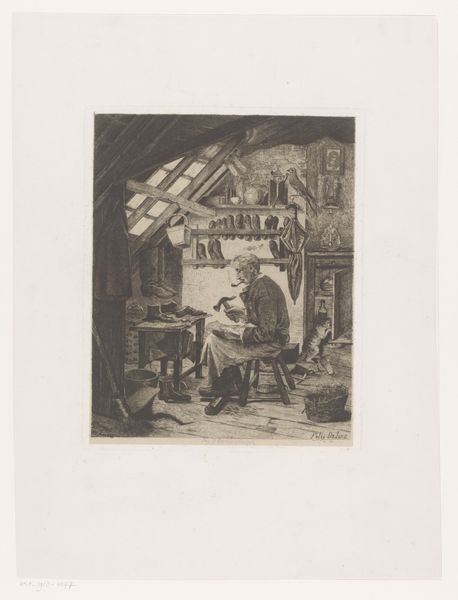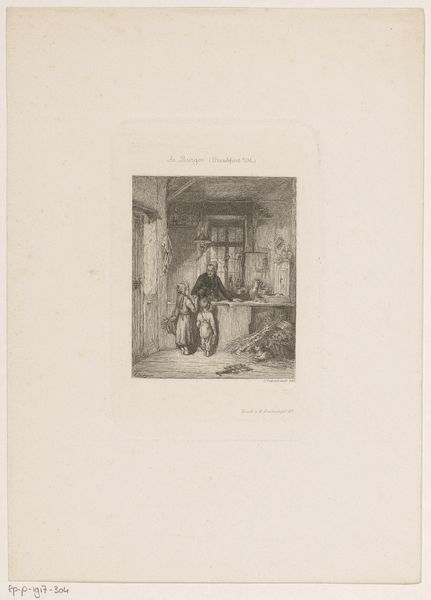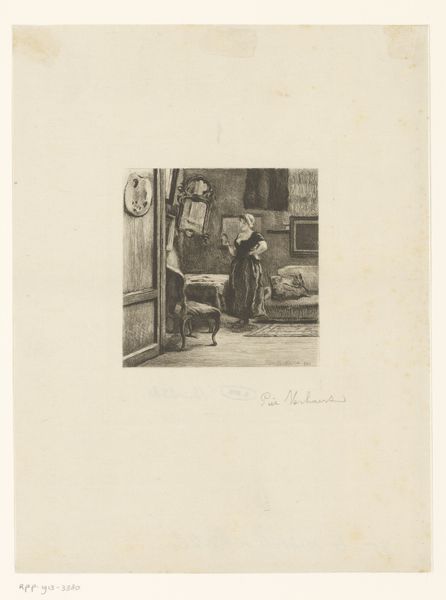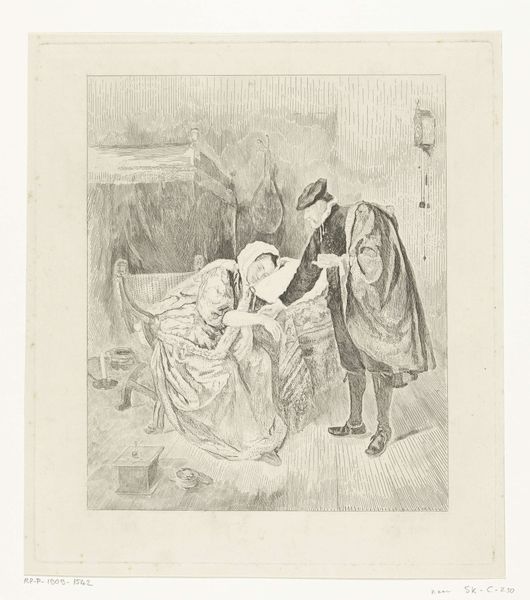
Vissersinterieur met treurend koppel bij een lege wieg Possibly 1882 - 1884
0:00
0:00
drawing, print, etching, paper, engraving
#
drawing
#
narrative-art
# print
#
impressionism
#
etching
#
old engraving style
#
landscape
#
figuration
#
paper
#
line
#
genre-painting
#
engraving
#
realism
Dimensions: height 410 mm, width 493 mm
Copyright: Rijks Museum: Open Domain
Editor: This is François de Meersman’s etching, "Fishermen's Interior with Grieving Couple by an Empty Cradle," likely made between 1882 and 1884. The somber scene is rendered in delicate lines; it's quite striking. How do you interpret the artist’s choices in the composition? Curator: The composition is undeniably structured around the void. The empty cradle occupies a central, foregrounded position, establishing it as the nucleus of the emotional narrative. Notice how the converging lines of the floorboards and the interior architecture subtly direct the viewer's gaze toward this pivotal emptiness. Editor: I see that now, the lines do lead the eye. So, is the grief amplified by that deliberate construction of space? Curator: Precisely. The figures, rendered with a certain linear fragility, seem almost absorbed by the oppressive weight of the stark, angular lines defining the room. Note also how the light, or rather the absence of it, contributes to the overall mood. Editor: It’s interesting how the light seems to pool around the doorway and the figure standing there, further isolating the couple. Curator: Consider how the artist uses the etching technique itself to reinforce this atmosphere. The density and direction of the etched lines create texture and depth, yet the overall effect is one of constrained emotion, a kind of visual restraint mirroring the couple’s muted grief. Could we interpret the technique here not as merely representational, but fundamentally expressive of loss? Editor: That’s a compelling way to see it; I was focusing on the emotional content alone. It seems that Meersman's deliberate choices with line and form elevate the work. Curator: Indeed. It transforms a genre scene into a powerful study of grief and absence through the considered application of artistic technique.
Comments
No comments
Be the first to comment and join the conversation on the ultimate creative platform.
